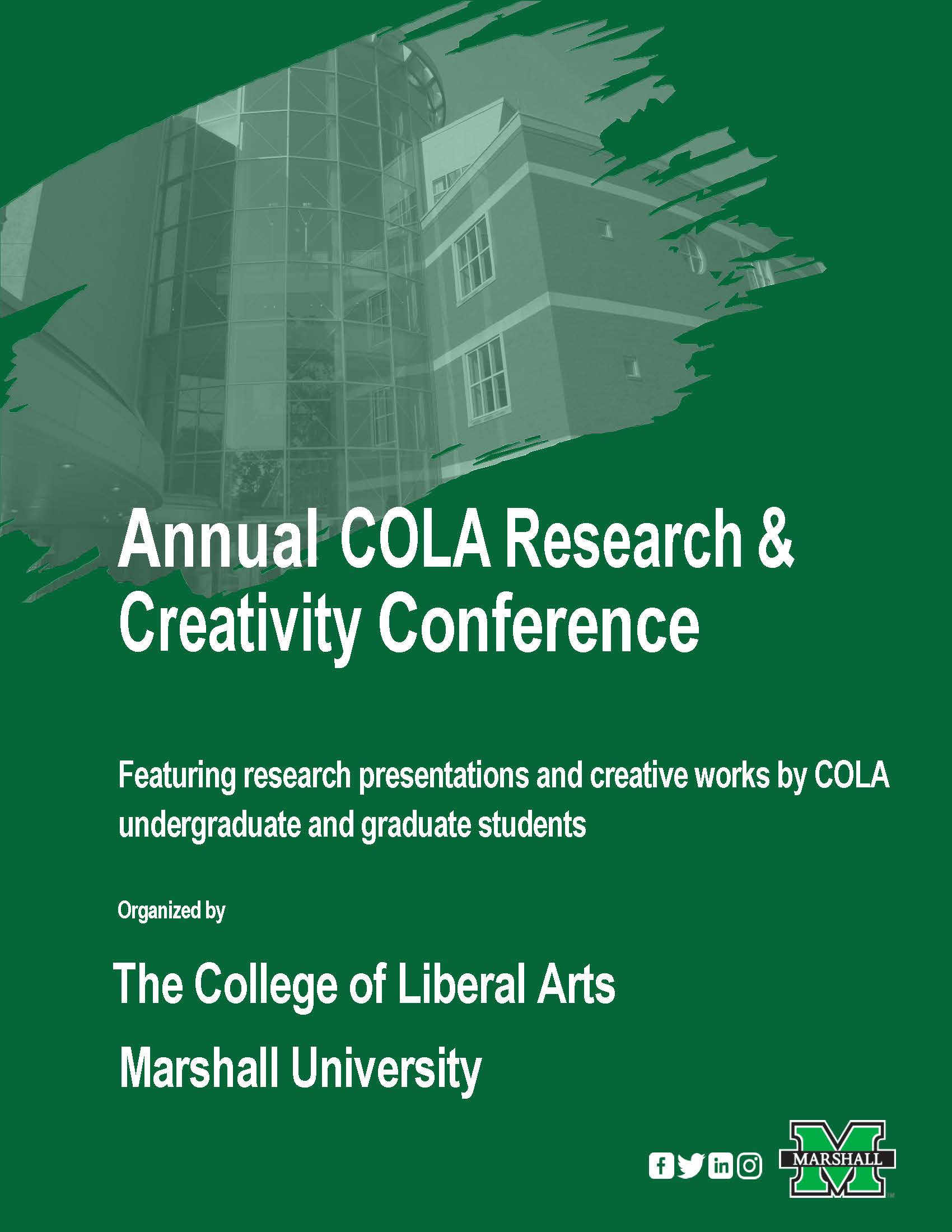Document Type
Poster Presentation
Start Date
20-4-2018 10:00 AM
End Date
20-4-2018 11:00 AM
Keywords
gender, race, nonverbal
Biography
My name is Hannah Fetty, and I am a psychology major in my third year at Marshall University. I currently serve as a resident advisor in the First Year Residence Halls and as the president of Chi Alpha Campus Ministries. I am also a member of Psi Chi and genuinely enjoy being involved on campus.
Major
Psychology
Advisor for this project
Dawn Goel
Abstract
Previous research suggests that implicit biases often present themselves out of conscious awareness in actions, behaviors, feelings, and emotions (Dovidio, Kawakami, & Gaertner, 2002; Swim, Aikin, Hall & Hunter, 1995). The present research is an observational study that seeks to investigate these biases by examining cues present in nonverbal behavior. This study will specifically focus on bias surrounding gender and race and will use the distance that individuals stand apart from one another in various lines in public places to do so. There are two general hypotheses. The first hypothesis predicts that individuals will stand closer to those who are moderately similar in gender than those who are completely similar in both gender and race, moderately similar in race, and completely dissimilar. The second predicts that individuals will stand closer to Caucasian women than Caucasian men, non-Caucasian women, and non-Caucasian men. Data will be collected in the tri-state region and analyzed based on similarities and physical characteristics of individuals standing in line at different public venues. Results of this study will allow for the examination of implicit biases and their potential impact on nonverbal behavior in a public setting and in simple, everyday interactions.
Actions Speak Louder Than Words: The Impact of Gender and Race on Personal Space
Previous research suggests that implicit biases often present themselves out of conscious awareness in actions, behaviors, feelings, and emotions (Dovidio, Kawakami, & Gaertner, 2002; Swim, Aikin, Hall & Hunter, 1995). The present research is an observational study that seeks to investigate these biases by examining cues present in nonverbal behavior. This study will specifically focus on bias surrounding gender and race and will use the distance that individuals stand apart from one another in various lines in public places to do so. There are two general hypotheses. The first hypothesis predicts that individuals will stand closer to those who are moderately similar in gender than those who are completely similar in both gender and race, moderately similar in race, and completely dissimilar. The second predicts that individuals will stand closer to Caucasian women than Caucasian men, non-Caucasian women, and non-Caucasian men. Data will be collected in the tri-state region and analyzed based on similarities and physical characteristics of individuals standing in line at different public venues. Results of this study will allow for the examination of implicit biases and their potential impact on nonverbal behavior in a public setting and in simple, everyday interactions.




